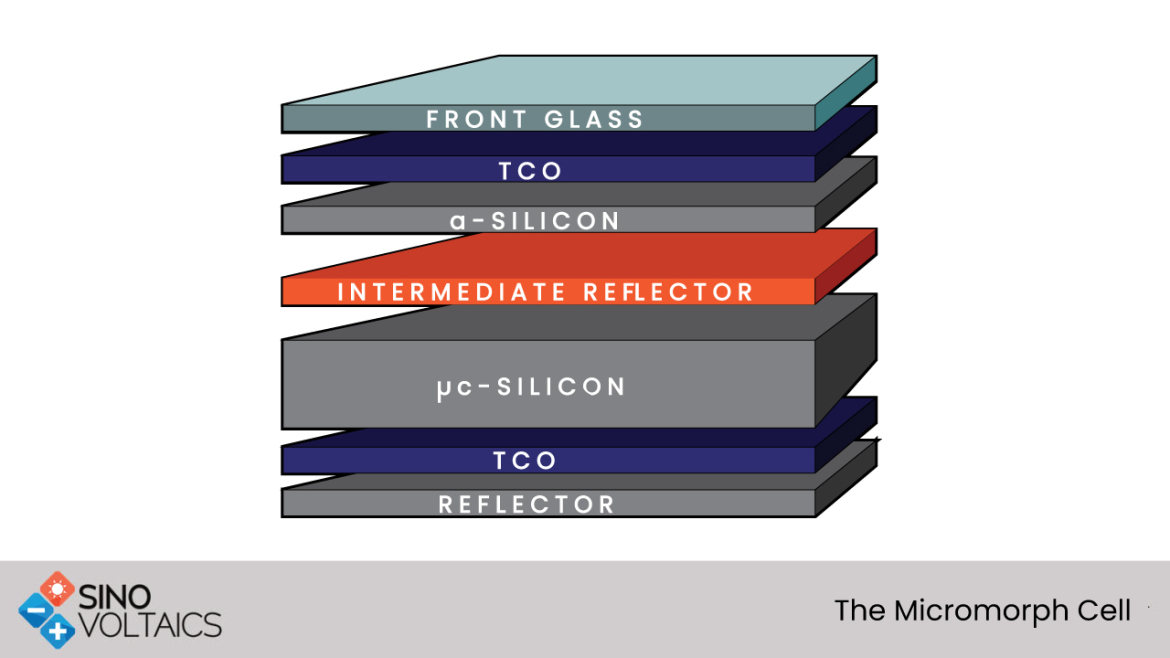Degradation of Solar Cell Performance Due To Microcracks
CZTS Solar Cells
Float Zone Silicon Cells (FZ)
Different Wafer Sizes
Photoelectrochemical Cell
CIGS solar cells
Luminescent Solar Concentrator Cells
Solid State Solar Cells
[...]
 The band gaps of microcrystalline Silicon (equal to 1.1eV) and amorphous Silicon ( equal to 1.7eV) are properly suited for tandem solar cells, and the Shockley Queisser limit of this cell can lead to conversion efficiencies that nearly reach 30%. This number can not be reached in reality and common efficiencies are around 9%. This number is beyond the known stable efficiencies of the single junction thin film silicon solar cells which is normally in the range of 6%. One of the reasons for the low costs of thin film silicon solar cells is that it has a very low thickness that is around 2 µm in comparison to 200 µm for silicon wafer. In the range of red and infrared wavelength, light trapping is required as the 2 µm of silicon is not enough to absorb all light.
The band gaps of microcrystalline Silicon (equal to 1.1eV) and amorphous Silicon ( equal to 1.7eV) are properly suited for tandem solar cells, and the Shockley Queisser limit of this cell can lead to conversion efficiencies that nearly reach 30%. This number can not be reached in reality and common efficiencies are around 9%. This number is beyond the known stable efficiencies of the single junction thin film silicon solar cells which is normally in the range of 6%. One of the reasons for the low costs of thin film silicon solar cells is that it has a very low thickness that is around 2 µm in comparison to 200 µm for silicon wafer. In the range of red and infrared wavelength, light trapping is required as the 2 µm of silicon is not enough to absorb all light.